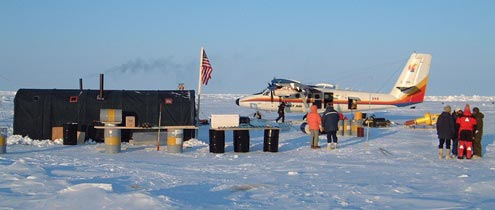
The North Pole

On April 6th, 1909 Peary, Henson, Igginguaq, Sigluk, Odaq, and Ukkaujaaq made it to the North Pole! It was a hard journey as they worked against moving ice, piles of ice blocks, and areas of water called leads. Since their pioneering expedition there have been many other trips to the pole. People have traveled to the pole by dog sled and by cross-country skies. Nuclear submarines have travelled under the ice and surfaced at the pole. Your can even go to the North Pole as a tourist. Small aircraft fly people to the North Pole every April and Russian icebreakers take tourists to the North Pole during summer.


Each spring a group of scientists spend a month at the North Pole making observations of the atmosphere, snow, ice, and ocean. The scientists fly to the Pole in a small plane. At the end of the visit, the scientists leave behind buoys that automatically make measurements and send data home via satellite. How much snow do you think there is at the North Pole? In the year 2000 there was 30 cm.
 We can now look at the North Pole from space. This color image of the North Pole was taken from a NASA satellite on May 5, 2000. We added a red dot and longitude lines to mark the position of the North Pole. In the image sea ice appears light and leads appear dark. Leads are areas of water. Some clouds are visible in the bottom left and right portions of the image.
We can now look at the North Pole from space. This color image of the North Pole was taken from a NASA satellite on May 5, 2000. We added a red dot and longitude lines to mark the position of the North Pole. In the image sea ice appears light and leads appear dark. Leads are areas of water. Some clouds are visible in the bottom left and right portions of the image.
